Advice to the Blue Ribbon Commission
The nation's nuclear energy bloggers have their say about what to do with used fuel
Editor: Dan Yurman
On May 13, 2011, the Department of Energy's Blue Ribbon Commission (BRC) issued draft recommendations based on the work of three subcommittees. The long-awaited policy prescriptions are intended to establish a long-term framework for managing used nuclear fuel from commercial nuclear reactors.
Because of the significance of the used fuel issue, ANS Nuclear Cafe asked some of North America's leading nuclear energy bloggers to comment on the BRC's proposed solutions.
Our intent in publishing these voices from the Internet is to bring some waves of independent thinking to the shores of conventional wisdom. Of course, at any beach the pattern of some waves do overlap, but others reach the tidal zone entirely in their own time.
We did not ask for a consensus, or approval, or disapproval of the BRC's work. Each blogger was asked to provide one short recommendation. Here are 12 of them for your review.
Use the Waste Isolation Pilot Plant by Gwyneth Cravens
The EPA-certified Waste Isolation Pilot Plant has been successfully storing transuranic defense waste since 1999 deep in a New Mexican salt bed that has been geologically stable for 230 million years and will be for millions more. Thousands of studies conducted by many scientific disciplines determined that a breach of the repository leading to radioactive release is highly unlikely.
Originally the plant was to accept used commercial nuclear fuel as well, but for bureaucratic reasons a search for a separate location ensued. For political reasons and despite billions spent and decades elapsed, there's still no central repository.
The residents around WIPP welcome an interim storage and reprocessing site for used fuel using the vast salt bed. The research and risk assessment have already been done. The commercial fuel retains 95 percent of its energy and can and should be recycled.
Gwyneth Cravens http://cravenspowertosavetheworld.com/
It isn't waste. It's energy. Use it. by Jack Gamble
What some call waste, I call an invaluable energy resource. To dispose of this fuel would be no different than tossing solid gold in the trash. Those used fuel rods still contain 96 percent of the original energy. Both mixed oxide fuel for conventional reactors and uranium-238 in breeder reactors can allow us to extract this vast quantity of energy.
This is not a theoretical technology or something from science fiction. This is technology that was developed in America, by Americans, decades ago.
Our current policy and that proposed by the Blue Ribbon Commission takes an invaluable national resource and makes it a liability. It's time our leaders stop allowing fear-induced myths about nuclear power to dictate national energy policy. We should instead put this fuel to use driving our economy, protecting our environment, and ensuring that our nation is safe from the whims of tyrants ruling energy-exporting states.
Jack Gamble http://www.nuclearfissionary.com
_______
A disappointment given the talent assigned to the task by Meredith Angwin
The Blue Ribbon Commission mission was to provide recommendations for a "safe, long-term solution to managing the nation's used nuclear fuel." The commission's 15 members included a nuclear engineer and a physicist. Others were senators, presidents of companies, and a few environmental policy people. In other words, the BRC was staffed mostly with policy wonks, not scientists.
This choice of members delighted me. It seemed to acknowledge that the decision would rest on policy considerations, not technical issues. The technical problems have already been solved: recycling in France and storage in New Mexico.
But no! The BRC punted on policy. It recommended "interim" storage while the (supposed) technical problems undergo further study. The BRC handed nuclear opponents another hammer of "nobody knows what to do with this stuff." We can reprocess now. We should reprocess now. We needed a little courage in our commission.
Meredith Angwin http://yesvy.blogspot.com/
_______
Recycle fuel, don't throw it away by Steve Aplin
For decades, America has debated what to do with the used fuel from its nuclear reactors. Used fuel still contains enormous amounts of energy-energy that could provide clean, safe, cheap electricity to millions of American homes. Shouldn't used fuel be recycled?
True, unrecycled used fuel poses no danger to anyone and occupies only a tiny amount of space. And true, there is no real urgency to decide right this minute what to do with it.
Technology exists, however, that can recycle used nuclear fuel. Numerous countries-France, Belgium, Japan, Britain, Switzerland, and others-already enjoy the benefits of cheap electricity from recycled nuclear fuel. Recycling is always a sensible way to manage natural resources.
And, since nuclear recycling also presents a way to reduce dependence on increasingly expensive, carbon-heavy fossil fuels, it is an obvious, large-scale answer to America's energy problems. It is time for America to stop debating and start recycling.
Steve Aplin http://canadianenergyissues.com/
_______
Kicking the can down the road by Jarret Adams
We must think beyond just temporary storage and permanent disposal-recycling is an essential part of building a more sustainable fuel cycle. Interim storage facilities are only part of the solution. Without a complete strategy for managing the nation's used fuel, we are only "kicking the can down the road."
After four decades, the United States continues to struggle with the question of "is used nuclear fuel a resource or a waste?" Recycling is a proven solution that conserves natural resources, simplifies waste management, and is cost competitive. In short, recycling has demonstrated that used fuel is indeed a resource.
Deployment of recycling technology would increase energy security while creating tens of thousands of jobs and billions of dollars in regional investment. Consequently, development of a recycling center could help increase public support for a proposed interim used fuel storage facility. Read more about Areva's vision for recycling here.
Jarret Adams http://us.arevablog.com/
_______
We need bold thinking, not old thinking by Charles Barton
We need to boldly go into the uncharted energy future where no one has gone before. Climate scientists tell us that about 70 percent of our energy resources, currently derived from fossil fuels, need to find substitutes. For many current energy uses-including surface, air, and sea transportation; industrial process heat; and peak, backup, and load following electricity-renewable substitution seems unlikely, and current nuclear technology is too costly and inefficient. Disruptive innovation and disruptive technology are called for.
Recently, the Reactor & Fuel Cycle Technology Subcommittee of the Blue Ribbon Commission wrote, "No currently available or reasonably foreseeable reactor and fuel cycle technologies, including current or potential reprocess or recycle technologies, have the potential to fundamentally alter the waste management challenge this nation confronts over at least the next several decade."
No blue ribbon for the commission. No ribbon at all. Look again.
Charles Barton http://nucleargreen.blogspot.com
_______
The BRC is not serious about the future of nuclear energy by Cheryl Rofer
Are we serious about nuclear energy? It's 20 percent of the electrical energy supply in the United States and likely to become a larger source in the future, when we will need more electrical energy and to decrease the carbon dioxide emissions that go along with it.
If we're serious, we need to deal with the whole fuel cycle, including used fuel. There are a couple of ways to do this: either put the used fuel elements out of sight or rework them to recover usable materials.
Politicians need to recognize this and think more broadly than Not In My Backyard. The nuclear industry needs to recognize this and to think more broadly than this quarter's profits. A repository may be the answer. Improved methods of reprocessing may be the answer. Kicking the can down the road is not the answer.
Cheryl Rofer http://phronesisaical.blogspot.com/
_______
No rush to recycling needed by Rod Adams
I am a lifelong procrastinator who lives by the motto, "Never do today what you can put off until tomorrow and never do at all what you can put off indefinitely." I am thus happy to see that the BRC has apparently reached the conclusion that America does not have a nuclear waste crisis. Instead, we have a used nuclear fuel resource opportunity.
Interim storage at regional sites enables eventual recycling, but there is no rush to pick a technology. The future resource does not take up much space, it has never hurt anyone, and taking care of it costs a relatively tiny amount of money compared with the benefits that the first time use of the fuel provided. Do customers notice a 1 mill per kilowatt-hour fee?
The BRC recommends removing deadlines, opening up the field of possibilities, and taking our time. Those are good ideas.
Rod Adams http://atomicinsights.com/
_______
A Gentleman's "C" by Steve Skutnik
In nuclear waste management, three C's matter: credibility, consent, and consensus. Unfortunately, the Blue Ribbon Commission's recommendation for interim storage fails on all counts.
For nuclear energy to gain widespread acceptance, the public must believe a credible plan exists to manage waste. Many are rightly skeptical of engineering on million-year timescales-the kind required if we simply dispose of used fuel intact. To the public, our current policy lacks credibility, yet the BRC plan does little to resolve this.
Consent is vital to any future repository, which is needed even if reprocessing is adopted. Yucca Mountain failed by being forced upon residents through legislative fiat, yet consent-based repository projects have been successful both here and abroad.
Finally, waste management policy must represent a broad social consensus. The fragility of the current policy was evident in how easily it was derailed by political maneuvering. Interim storage simply punts on this issue, leaving it still unresolved.
Steve Skutnik http://neutroneconomy.blogspot.com/
_______
Molten salt reactor has a role by Rick Maltese
First, short-term storage is all that is needed. And second, it is necessary to change the way the Nuclear Regulatory Commission assists with innovation and self-education.
Long-term storage should not be on the table for anything other than decommissioned materials that cannot be reused and the minute quantities of waste that cannot be made useful after reprocessing.
Technology is available to deal with reprocessing within the lifetime of useable recyclable waste. Of all fourth generation reactors, the molten salt reactor family is a technology most likely to occur in the near future. Objections to the liquid fluoride thorium reactor variant of the thorium molten salt reactor and the liquid chloride fast reactor and the denatured molten salt reactor all have modern solutions achievable within 10 years.
Lastly, engineers and academics need to play a larger role in the consultation process for allowing new nuclear reactor designs. Business models are secondary when the human race is at stake.
Rick Maltese http://deregulatetheatom.com
_______
Use fast reactors by Robert Steinhaus
If the United States hopes to lead the world in nuclear technology and continue to guide the rest of the world in peaceful uses of nuclear power, it is important that it continue to innovate and pioneer handling of nuclear waste. One pass through fuel utilization (< 1 percent of the uranium fuel burned) is wasteful.
The United States should lead in the development of deep burn molten salt reactors and transuranic fueled reactors such as the Russian MOSART (a liquid salt fuel reactor concept). This technology on the near horizon combines partitioning of the components of used nuclear fuel with transmutation and incineration of separated radiotoxic nuclides into shorter-lived or even stable elements.
The effect of developing this technology:
- Separation of fissionable materials should lead to production of fuels usable in advanced molten salt reactors.
- Transmutation of radionuclides extracted from used fuel need be sequestered for only a period of a few hundred years.
The pen is no mightier than the engineering compromises and tradeoffs that designed it.
Robert Steinhaus (Mr. Steinhaus is an active participant in online discussion forums about nuclear energy.)
_______
Revive the fast flux reactor by Carl Holder
The Fast Flux Test Facility (FFTF), at the Department of Energy's Hanford Site in Washington State, can be reactivated with a stroke of President Obama's pen. The administration's political party controls the region, and the DOE has stated a need for fast reactor R&D capability.
There was an unsuccessful rush to decommission this unique 400-MWt sodium-cooled fast reactor-the DOE's newest and most sophisticated test reactor, but Benton County (in Washington State) and many others fought to maintain the now deactivated FFTF in cold stand-by.
A presidential order can deliver nuclear R&D credibility and reinstate fast neutron testing capability-now lost-to the United States. The DOE signed a memorandum of understanding with France and Japan to advance sodium fast reactor R&D. What does the United States bring? Russia, China, and India are rapidly moving to dominate this advanced nuclear technology sector. Without test reactor capability, the United States will neither be in position to influence advanced nuclear international developments nor certify new reactor fuel designs.
Carl Holder http://usa-cargo.info
_______
Closing thoughts

While many are disappointed that the BRC endorsed the conventional wisdom about used fuel, there is one thing that is clear. The development of an independent federal corporation and an interim storage site with dry casks is a major contracting opportunity for engineering procurement construction (EPC) firms.
First, there is the management and operations contract to run the federal corporation, but that's chicken feed compared with the acquisition of casks, a site to store them, and the impressive truck and rail logistics that will be needed to move fuel stored at the nation's 104 reactors to the interim storage site.
Second, while the nation's utilities that have paid into the Nuclear Waste Fund are understandably hesitant about letting Congress allocate that money for anything less than a permanent repository, getting the used fuel off reactor sites is an important goal. Having a credible management entity, such as any of the global EPC firms that are capable of doing the work, is an added confidence builder.
Location, location, location
As to location for an interim storage site, a dry Western state makes the most sense, but most of the fuel is at reactors east of the Mississippi. Nevada is not a current candidate for the job. So, who will raise their hand to host one?
In the West, New Mexico, with its successful track record at WIPP, two defense-related national laboratories, and Urenco's enrichment plant, seems to be comfortable with all things nuclear. Idaho would love to do long-term R&D on reprocessing and advanced fuels, but even under the gung-ho mandate of the now much maligned Global Nuclear Energy Partnership program, it could not step up to interim storage.
In the East, the Savannah River Site has shown moxie by establishing an energy park for proof of concept prototypes of small modular reactors. Also, Aiken, S.C., is home to the construction of the National Nuclear Security Administration's MOX fuel facility that will convert 34 tons of surplus weapons-grade plutonium into the equivalent of 1700 PWR fuel assemblies for commercial reactors. Like New Mexico, South Carolina has shown no fear about handling nuclear technologies and materials.
Perhaps the nation will wind up with two interim storage sites. Who knows?
Regardless, a state that wants the site will do so for the jobs that will be created. The reason is that once the fuel starts coming to an interim storage site, it will never, ever stop.
Perhaps a decade or so from now, the nation may wake up and smell the coffee when it comes to energy security. If that change comes to pass, the reprocessing plant will likely be built next to the interim storage site. Here's some advice-buy the land now.
# # #
Dan Yurman publishes Idaho Samizdat, a blog about nuclear energy. He is a frequent contributor to ANS Nuclear Cafe.


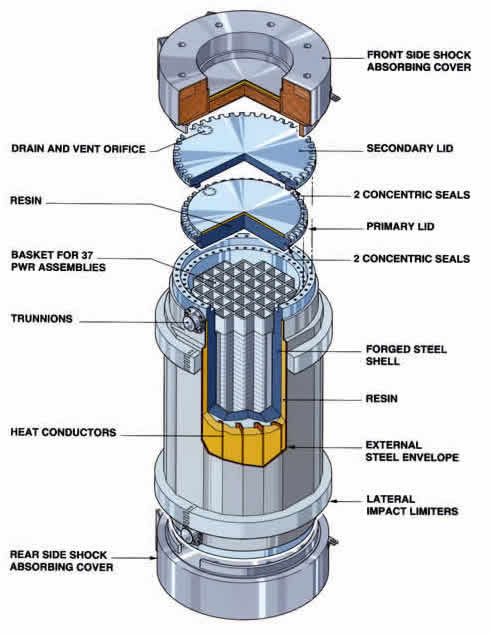


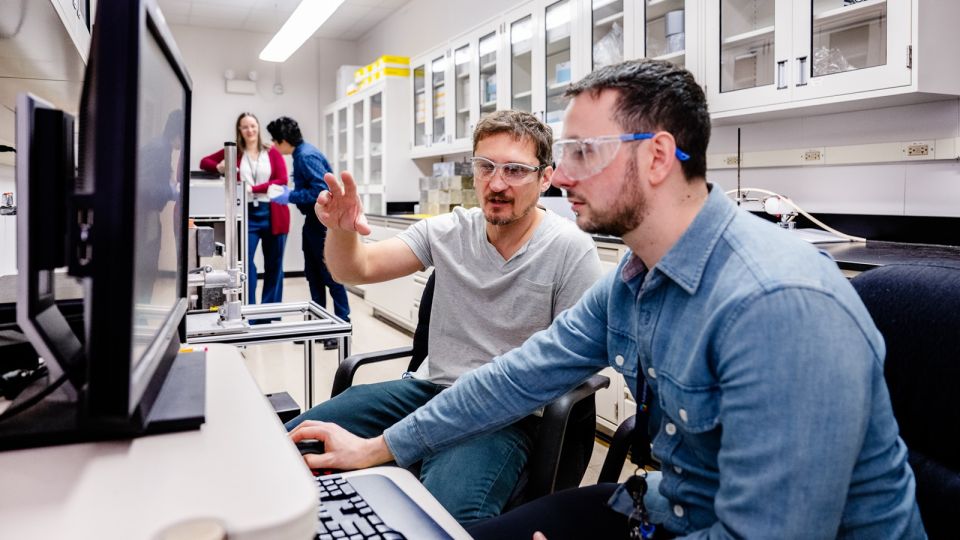


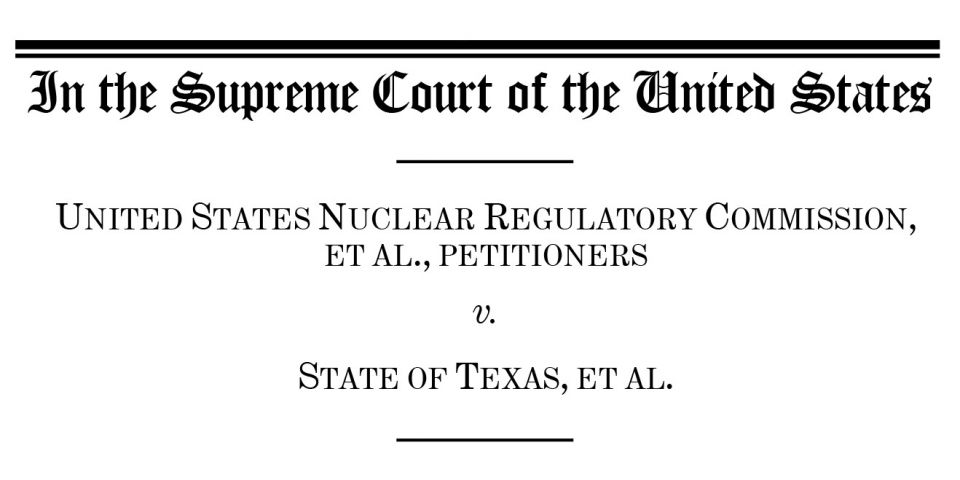
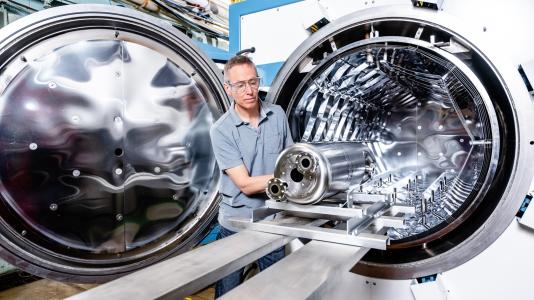
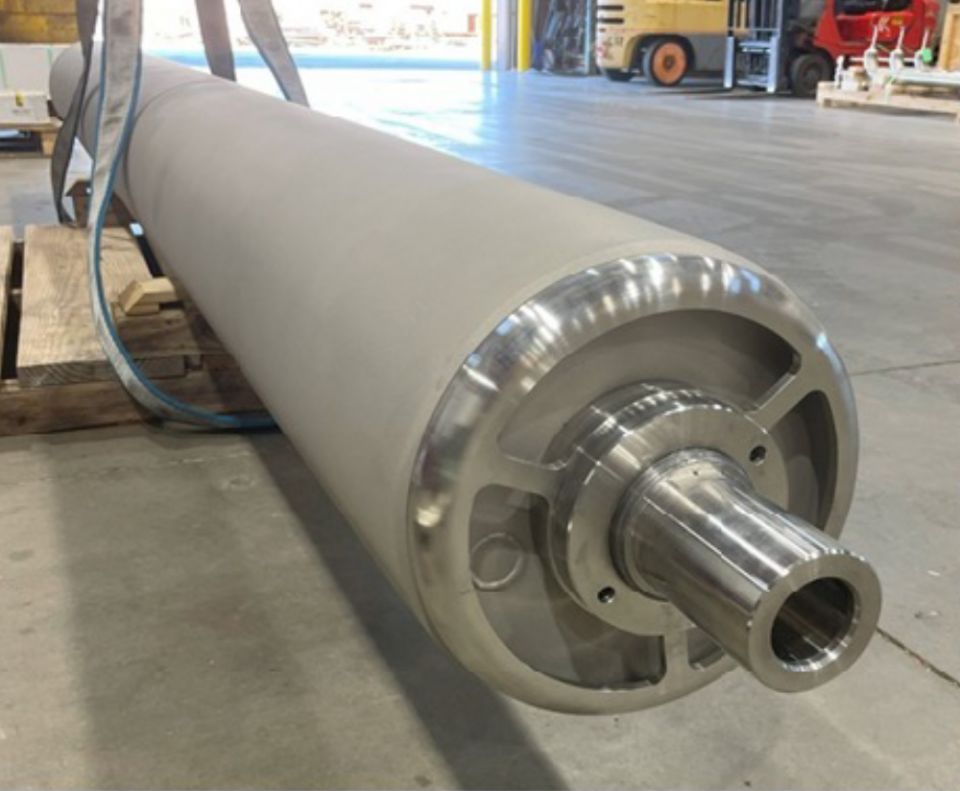

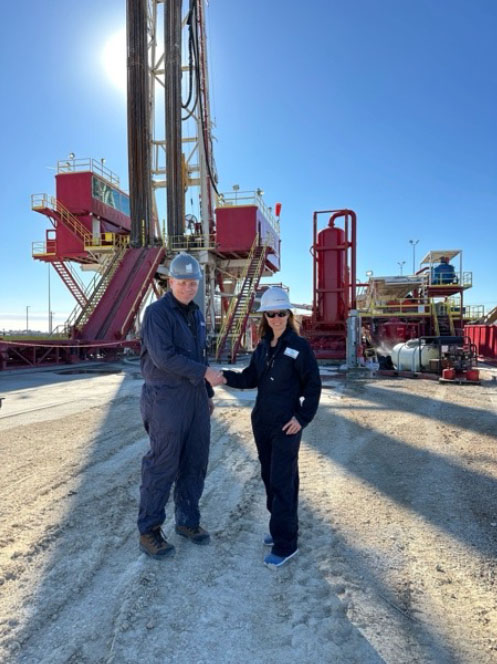.jpg)